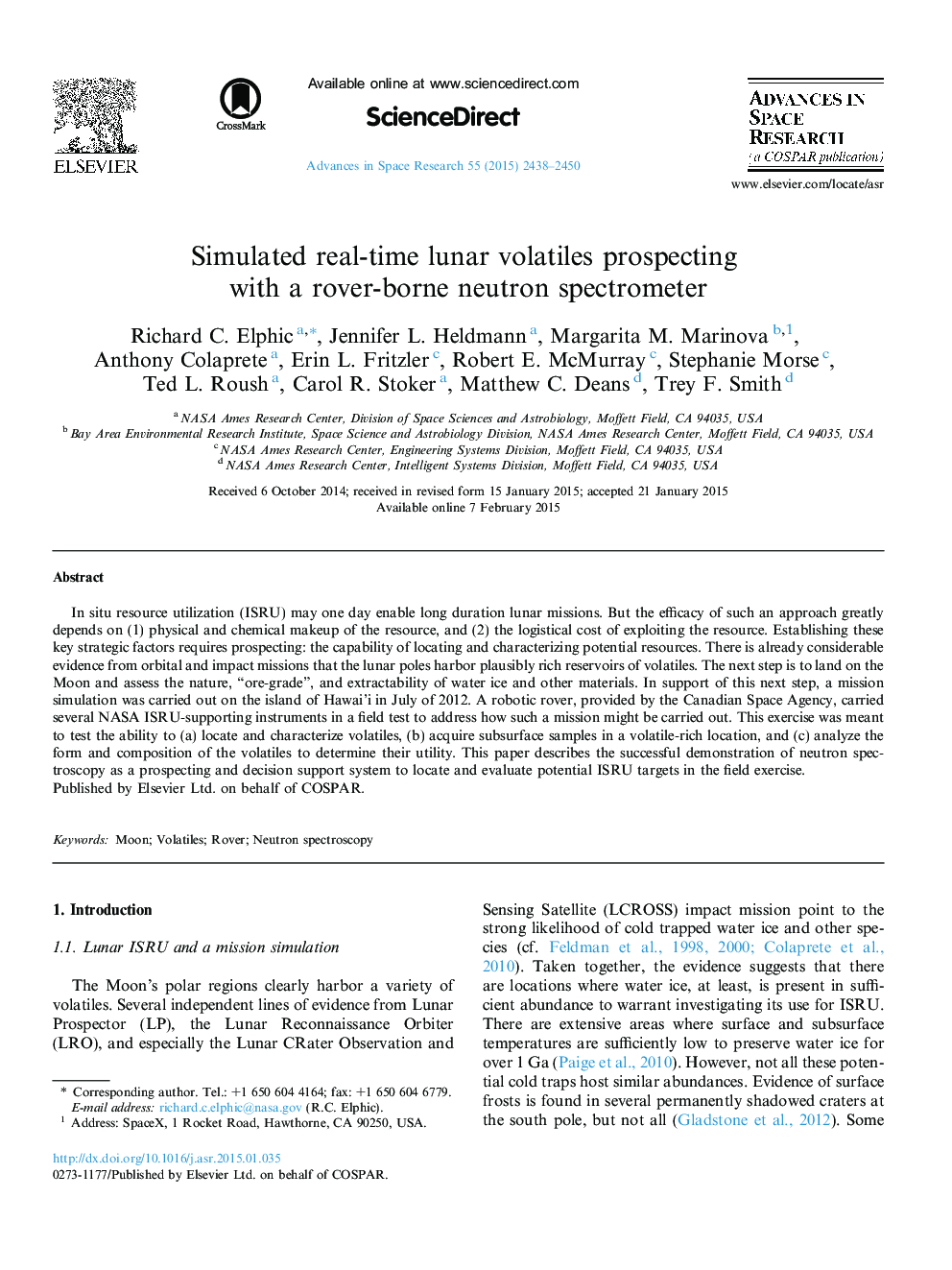| Article ID | Journal | Published Year | Pages | File Type |
|---|---|---|---|---|
| 1763529 | Advances in Space Research | 2015 | 13 Pages |
•In situ resource utilization may revolutionize human lunar exploration.•Robotic missions to identify and characterize natural resources are needed.•Field test of rover-borne neutron spectrometer has shown operational feasibility.
In situ resource utilization (ISRU) may one day enable long duration lunar missions. But the efficacy of such an approach greatly depends on (1) physical and chemical makeup of the resource, and (2) the logistical cost of exploiting the resource. Establishing these key strategic factors requires prospecting: the capability of locating and characterizing potential resources. There is already considerable evidence from orbital and impact missions that the lunar poles harbor plausibly rich reservoirs of volatiles. The next step is to land on the Moon and assess the nature, “ore-grade”, and extractability of water ice and other materials. In support of this next step, a mission simulation was carried out on the island of Hawai’i in July of 2012. A robotic rover, provided by the Canadian Space Agency, carried several NASA ISRU-supporting instruments in a field test to address how such a mission might be carried out. This exercise was meant to test the ability to (a) locate and characterize volatiles, (b) acquire subsurface samples in a volatile-rich location, and (c) analyze the form and composition of the volatiles to determine their utility. This paper describes the successful demonstration of neutron spectroscopy as a prospecting and decision support system to locate and evaluate potential ISRU targets in the field exercise.
